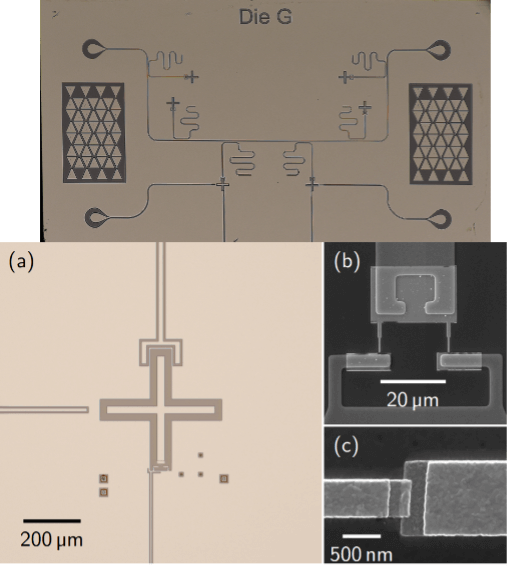Quantum neuromorphic computing (QNC) is a novel method that combines quantum computing with brain-inspired neuromorphic computing. Neuromorphic computing performs computations using a complex ensemble of artificial neurons and synapses (i.e., electrical circuits) to emulate the human brain. QNC may lead to a quantum advantage by realizing these components with quantum memory elements, or memelements, which can store and process quantum information within the same device. This research aims to achieve experimental realization of superconducting quantum memelements, which has never been done before. A quantum memcapacitor will be fabricated by depositing and patterning thin aluminum films, and then cooling to cryogenic temperatures to unveil quantum-mechanical properties in highly nonlinear regimes. The success of the device will be demonstrated by measuring a characteristic Lissajous curve with a pinched hysteresis, which is a hallmark of a memelement. A variety of memcapacitor regimes will then be investigated, including two-photon memcapacitive processes, loss and temperature effects. Finally, entanglement between two quantum memcapacitors will be shown theoretically and experimentally, paving the way toward an actual QNC. QNC will lead to new knowledge on quantum technologies by helping develop improved fabrication and quantum machine learning techniques inspired by the brain. Further, investigating the quantum mechanical properties of quantum memelements acting as artificial neurons in dissipative environments may provide further insight into the working principles of the human brain.

Figure 1. Optical images of a typical superconducting quantum device similar to the one investigated in this project.
Related Content
Quantum Sensing Applications using Quantum Communication Technology
Summary The Quantum Encryption and Science Satellite provides a platform to develop and deploy quantum sensing and metrology via photonic channels. This project will build upon ‘free-space’ quantum communication technology and explore new approaches and methods to advance two primary applications: quantum-enhanced telescopes, and spectroscopic sensing for methane detection in the atmosphere. For the […]
December 8, 2018

Development of Terahertz Polariton Lasers
Theoretical and experimental results show that the polariton lasing mechanism is a promising basis for a compact, efficient source of terahertz radiation.
July 1, 2017

Ultrafast Dynamical Studies of Valley-Based Qubits
Summary As monolayers, transition metal dichalcogenides (TMDCs) – such as tungsten diselenide (WSe2) – become direct-bandgap semiconductors capable of emitting light. Compared to conventional direct-bandgap semiconductors, such as III-V semiconductors like GaAs, excitons (quasiparticles made of an electron hole bound with an electron) and single-layer TMDCs (SL-TMDCs) have much stronger binding energy. Excitons and […]
June 29, 2018

Hybrid Quantum Materials towards Topological Quantum Computing
Summary Proximity engineered hybrid materials have shown promise for topological quantum information processing. This form of quantum computing provides a stable, error-tolerant approach for building scalable quantum information processors. Topological quantum computing relies on braiding non-Abelian particles, such as Majorana fermions, which do not exist in nature. One can however use materials engineering to […]
December 8, 2018

